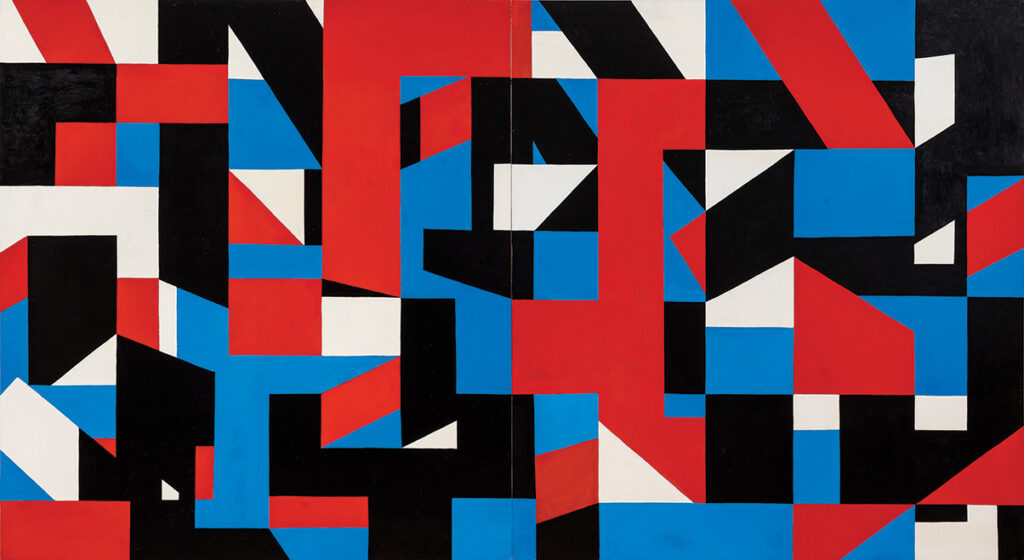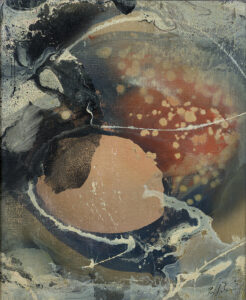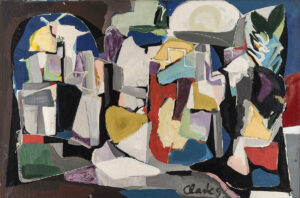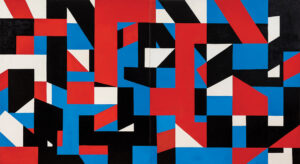Subscribe to Our Newsletter
They Loved Paris

American artists on the move at mid-century
by Lilly Wei
There was an epochal transition in the years immediately after World War II as the center of the art world, a position held by Paris for at least a century, pivoted to New York. The shift had begun earlier, as such shifts do, the ravages of two wars on European soil a significant part of the story, as was the city’s four long years of occupation by the Nazis. In “Americans in Paris: Artists Working in Postwar France, 1946–1962,” the thorough and thoroughly engaging survey investigating the period at NYU’s Grey Art Museum, we get a close-up of that baton passing. Formerly known as the Grey Art Gallery, it is the museum’s inaugural exhibition, on display through July 20, in its new facilities at 18 Cooper Square and the tale of the (mostly) young American artists, writers, musicians, and dancers who thronged the fabled French capital, spending a year or longer—some their entire lives—attracted there by countless reasons, not the least of them the city’s unextinguishable, if somewhat tattered, allure. Many of these artists were returning war veterans, the newly established G.I. Bill in hand, at a time when the Americanization of everywhere and everything had yet to become ubiquitous. That the 20th century (at least the second half) would be dubbed the “American Century” was not yet a tagline.

Paul Jenkins, Uranus, 1956, oil and chrysochrome on canvas, 28 3⁄4 x 23 1⁄2 in.
© Estate of Suzanne Jenkins/Licensed by Artists Rights Society (ARS), New York 2023.
The organizers of “Americans in Paris” are two accomplished professionals: the art historian and writer Debra Bricker Balken, the lead curator, and Lynn Gumpert, who, as its director, has ably led the Grey for decades, producing noteworthy, scrupulously researched exhibitions time and again that were often first to illuminate critical areas of creativity overlooked by others. This survey is no exception, as it spotlights a period that many refer to, but no one has researched extensively, Balken and Gumpert discovered to their surprise—so they dug in, to learn more precisely who sought out Paris, why, and what their time there was like. What they discovered is outlined in unusually informative signage and labels that read like mini-bios with (some of) the good parts left in, and more exhaustively, in an engrossing, well-written, multi-authored, evocatively illustrated catalogue.

Ed Clark, The City, 1952, acrylic on canvas, 51 x 78 1⁄2 in.
Collection of Melanca Clark, Boston. Courtesy Hauser and Wirth © Estate of Ed Clark. Photo: Hollister and Young, Michigan Imaging.
The show begins in 1946, when many of the first G.I.s appeared in fully liberated Paris, welcomed, if ambivalently, by the notoriously proud French, in large part for the dollars courtesy of the U.S. government. It ends in 1962, when the Algerian War ends and political, social, and economic conditions in the United States, and especially in New York City, made going home again appealing, even mandatory, if an artist wanted to be in the vanguard. A project that took around four years to complete, delayed by the pandemic, the exhibition is a lively history lesson that doesn’t need a spoonful of sugar to go down, the tightly installed works telegraphing a heady sense of postwar ferment, fervency, and optimism, as well as—and how could it not?—an enormous sense of collective relief that the killings had finally stopped, and life could begin again.

Jack Youngerman, Panneau, 1951, oil on Masonite, 55 x 100 3⁄4 in.
Estate of Jack Youngerman, Bridgehampton, NY © 2023 Estate of Jack Younger-man/Licensed by VAGA at Artists Rights Society (ARS), NY.
From the more than 400 artists in Paris on the G.I. Bill, 170 artists are on view here, many of them now illustrious, such as the recently deceased Ellsworth Kelly and Carmen Herrera (recognition coming to her late in life but resoundingly, gratifyingly, at the forefront of a movement championing overlooked older women abstract painters of diverse ethnicities). Joan Mitchell, Jack Youngerman, Al Held, Sam Francis, Kenneth Noland are some of the other stellar names with works in the exhibition, abstract painters on both sides of the divide between the hard-edged, geometric, and minimalist, and the expressive, painterly, and dynamic. Some, like Held and Noland are barely recognizable, enthralled by the current, if waning, dominance of Abstract Expressionism, their signature styles still in the future. Figurative artists such as Nancy Spero and Leon Golub, even if outliers in this context, are important to include in this telling, and soon enough they would become mainstream, as representational, political, and feminist art ascended.




























